About the portuguese project
INTRODUCTION
This report aims to be a brief presentation of the research project the Portuguese team and its associated partners intend to start and pursuit. It is structured in three parts: first, the presentation of Simón Ruiz and its firm, second, the documental corpora compiled in his archive and third, the correspondent metadata. We'll provide a summary presentation of the instruments and methodology we agreed to follow in order to answer to a common conceptual and analytical grid: the one of TECT and DynCoopNet (software; databases architecture; …), as well as the final products to which addresses the tasks and procedures implemented.
In sum, practically and objectively, it aims to expose our methodological options in order to answer the overall team needs.
THE PROJECT
From the conductor background presented at the DynCoopNet proposal to ESF, we’ll try to address the theoretical framework of the project through an empirical work centred on Simón Ruiz, a new Christian merchant which commercial and financier company archive, property of Simon Ruiz Foundation, is kept at the Valladolid Provincial Archive 1. The team will try to address a research project aiming to take advantage of the existence of extended serial data of two documental nature: bills of exchange and merchant correspondence (this one, at a first stage only centred in the Portuguese letters) in order to promote a systematic data gathering guided by the theoretical approaches of TECT programme, that means: able to answer multidisciplinary demands and methodologies, namely GIS and mathematical modelling.
It's our aim to create a data base, oriented by the social networks theories and assumptions. The importance of network analysis has been recognized for a while long time in historical studies; however we are far from the role they actually perform within the context of other social sciences.
The difficulty to gather, in a systematic way, enough structured historical information about relations between individuals explains part of this problem. With this empirical research we’ll try to make it possible through the gathering of a significant amount of relational information able to address to the 16th and 17th century’s merchant’s networks methodological approaches proposed by the social networks models.
We’ll systematize all data in a structured database, which architecture will based be on individuals, aiming to gather elements related to their identification, their location (in time and space), their attributes (including their status in familial, professional, political, economics, religious and cultural spheres), their economic performances / functions, as well as social, familial and political ones, and their connections. Data would be gathered for each individual and for each link established between individuals.
The central research targets of the analytical framework will be as follows:
1. Reconstitution of networks;
Commercial network of Simão Vaz, Porto, 16th century (last quarter)
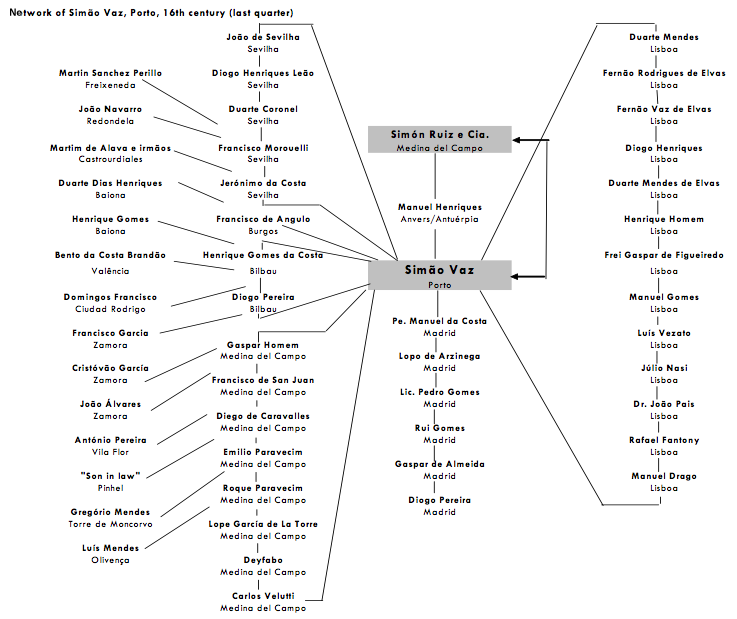
Source: Simón Ruiz merchant letters
Reconstitution: Amândio Barros
2. Appraisal of network models: networks topology, connectivity and density;
3. Appraisal of the relative position of each individual in the network;
4. Appraisal of “entities”: categories of partners involved in networks;
5. Identification of variables which interfere in the model;
6. Identification of cooperative behaviours and their connection with the goals of an enterprise;
7. Identification of compensative or punitive outputs within specific behaviours in specific contexts (gain vs. loses; promotion vs. punishment, …);
8. Space -time representation of cooperation networks ant its evolution overtime.
In the end, it’s our aim to seize the structure and the mechanisms of cooperation in a particular network structured in the First Global Age, and directly framed by trade networks centred on Europe, but with external, overseas connections.
METADATA ABOUT…
The producer: Simón Ruiz
Simon Ruiz was a merchant from Castille, whose expression as businessman went beyond Iberian frontiers, reaching all European trade circuits, as can be proved by his correspondence being extended all over Europe – Lisbon, Porto, Valencia, Genoa, Rouen, Rome, Venice, Lyon2, and establishing a complex network of agents.
Born in 1525/1526 in Belorado, Burgos, Spain, among an inexpressive wool merchant family, he began his career as a businessman with 25 years old, as a middleman of Ivon Rocaz, a Nante’s trader of cloth from Bretagne, who sent him some of his product to be sold in the Medina del Campo fair. The relevance of this market, considered as a neuralgic point of people, goods and credit3, encouraged Simon Ruiz, who succeed through an intensive participation in business acting as a representative to other commercial partnerships, He seems to begin by placing individuals of his trust in key points of the network, as well as engaging a network of informants in important trade places, while trading textiles, but also olive oil, spices, indigo, salt or wheat.
Simon Ruiz also invested in the trade with Spanish Indies (the West Indies), by establishing a trade company centred in Seville, but the severe income decrease in 1567 and 1568 made him focusing his investments mostly in France, Flanders and the ports of Bilbao, Alicante and Italy.
As Medina del Campo was considered one of the most important places of exchange, he also began to act as a banker, exchanging foreign currency, through the use of bills of exchange s, thousands of it remaining in the company archive. He became as important as some of his major clients, gave financial support to eminent personalities, as King Phillip II, when he needed money and supplies for the war in the Low Countries and to exterminate active revolts in Italian territories. Simon Ruiz financed the king since 1576 until 1588. This connection was heartened by the second marriage of Simon Ruiz with Mariana de Paz, in 1574, which had aristocratic origins and family members in the Court, by that time in Valladolid. They moved to the city and the contacts between Ruiz and the Court began to flourish, at a point that he was probably been received by the King himself in some occasions4.
After this period and following the Crown's bankruptcy, Simon Ruiz returned to Medina del Campo, where he died in 1597, with no sons, focusing his activity in finance rather than in trade, namely exchanging e in the fair of Lyon. After his death, his nephew Cosme Ruiz inherited the firm's management.
The Archive (1553-1630)
Although the archive of the merchant has several documental series, presented bellow, the Portuguese team will focus their attention in the bills of exchange (more than 21000) and the merchant correspondence with Portugal (more than 10 000 letters), dated from 1553 until 1597.
| COMMERCIAL LETTERS | |
| Received letters | 54.378 |
| Sent letters | 2.343 |
| 56.721 | |
| BILLS OF EXCHANGE | |
| Bills of exchange | 21.065 |
| COMMERCIAL ACCOUNTING | |
| Accounting Books of Simón Ruiz | 138 |
| Accounting Books of Cosme Ruiz | 18 |
| Accounting Books of S. Ruiz, C. Ruiz y L. De la Cámara | 9 |
| 165 | |
| VARIA COMMERCIAL DOCUMENTATION | |
| Balance, accounts, obligations, brief letters, summary of accounts, prices and change list, freightage contracts, debts, "asientos", reports, payments, insurances policies, bank fees, ... | 19.000 |
Sources typology at work
a) Bills of Exchange
It is important to remind that bills of exchange are the most important mercantile instrument of credit, trying to solve the risks and difficulties of cash transportation. In the 15th and 16th century, bills of exchange became a method of payment as well as the most frequent way of loan. The close relationship between these bills, as a financial tool, and Medina del Campo, is based on the fact that in the well-known fairs that took place in there, the use of such bills in trade starts to increase trough the acceptance of exchanges, payments and liquidations of other Castilian fairs made with foreign commercial places5. Thus, Medina fairs became one of the most important financial centers of the Castilian crown, attracting to it the most highlighted European bankers and exchange men. This can be proved by the plentiful testimonies' kept in the Simón Ruiz archive, mainly by the set of 21 000 bills of exchange produced and in circulation between 1553 and 1606, which had been received from multiple European financier houses and individual agents6.
As we know, bills of exchange may engage four different players7:
1 – the deliverer (le donneur; il datore; el dador o prestamista; o dador)
2 – the taker (le preneur; il pigliatore; el tomador o prestatario; o tomador)
3 – the beneficiary (le beneficiaire; el beneficiário o cobrador, o beneficiário)
4 – the drawee (el librado o pagador; o pagador)
That will allow us to identify the main agents of single or repeated transactions and characterize goods and commodities circulation, trade circuits, the amounts involved in the transactions and the degree of trust involved on these actions, measured, among others, by the acceptance or the denial of payments of those bills, according to different contexts and different agents.
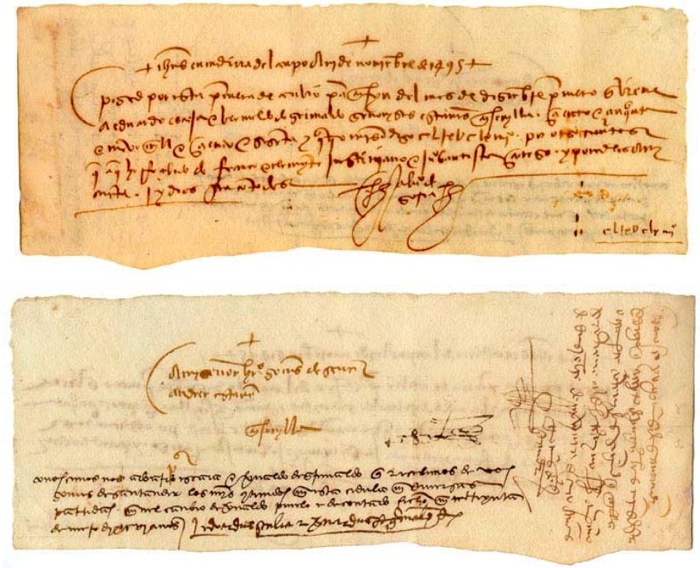
Data source: Medina del Campo, 3 de noviembre de 1495. Archivo de la Real Chancillería de Valladolid - Pleitos civiles. Pérez Alonso (f). Caja 104-1, pieza 23. In www.museoferias.net.
Practical example:
What can we extract from this document?
- The name and nationality of the agents:
- Eduardo Escaja e Bernardo de Grimaldo from Genoa (which are the beneficiaries);
- Franco e Clemente Justiniano e Juan Bautista Cereso (italians from very well-known firms, which are the delivers);
- Álvaro de Soria (the taker);
- Gomes de Santander, Sevilla (the drawee)
- Their role in the act as it was presented
- Action range: they are settled in Seville, by then the economical and financier capital of Castile (Enrique OTTE, M. A. LADERO QUESADA).
- Relationships between the agents: Álvaro de Soria (the taker) and Gomes de Santander (the drawee) they are brothers
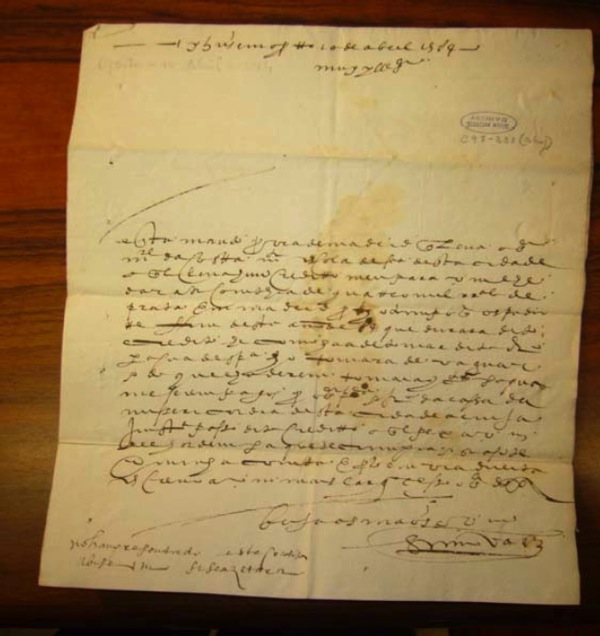
b) Merchant letters : correspondence with Portugal
The commercial letters present a much more interesting challenge to the researcher. For once, they are not as clear and formal as the bills of exchange. Extract the information is not so direct and easy, it requires a careful reading and interpretation of the data. On the other hand, they are richer in information, they give us more details, and they are more personal and humane. Again, this requires extra considerations, since we have to define the data we want to extract. Otherwise we'll be lost and overwhelmed by the extent and diversity of the established information, such as:
- Investment opportunities
- New connections and partnership creation
- Money flows
- Biographical data
- Daily life events and anecdotes
- Economical and political juncture
- Prices and wages information
- Economic routes and transportation circuits
- Weather and diseases
- War news
- Moral and ethics related to business affaires
Trying to address the main scientific targets of DynCoopNet, we’ll focus on:
- The agents: who they are (name, nationality); what family bonds they have; their social environment in order to ask at what degree this can determine their status inside the network; their role, titles, honors; their position and functions in the network and besides it; their progression inside the company (how can someone progress in business affairs).
- The financial action centers: where are they located; existence and construction of spatial hierarchies; specialization and complementarities between commercial centers.
- The business networks: between whom; strength of the connections; density of the net; relationships between companies.
- The Simón Ruiz company: how did they manage to control the spread agents? How were they able to reach the financial and commercial centers? How did they have organized a business network?
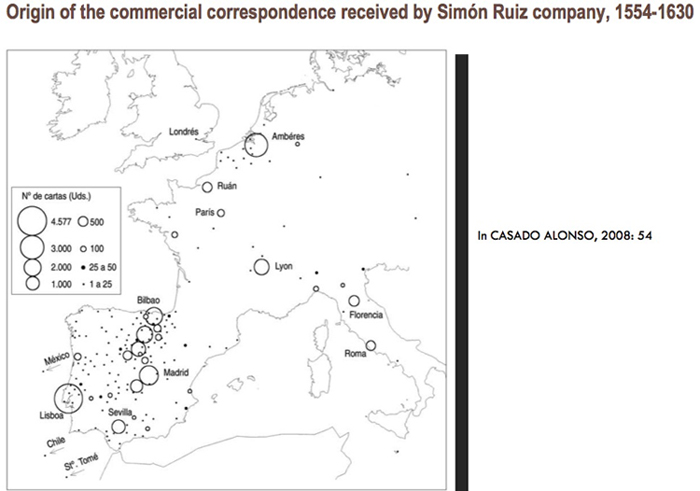
We don’t have the pretension that this kind of data source will give us the “overall picture” regarding the commercial connections between Medina del Campo and the Portuguese markets and merchants. We are aware that these documents were produced by a firm that had s its niche in the complex network that ties together the Iberian economy. In fact, this firm had s its own specialization in routes and products, defined its own commercial spatial range, and that will direct our perspective and will have influence in the overall picture appraised. But we also believe that it is a coherent and valid perspective. These documents reveal a multi-scale network and a multi-spatial dimension of the information, money, goods, connections that Simón Ruiz’s company handled.
THE SOFTWARE
Having as departing point the experience handled by Joaquim Carvalho on familial studied on local spheres, identified as “small worlds”, based on systematic data gathering, visualisation and analysis of parish records, mostly weeding data, we will base our data gathering, as main tool, on the software described under the designation of “Time link”, which summary description follows:

Time Link is computer tool specially developed to support micro-historical research with a strong emphasis on network analysis and prosopography. The system is been developed at the University of Coimbra and has been used in different types of research Recently it was used to create a database that congregates parish records of a Portuguese town named Óbidos, from the 16th to the 18th centuries, containing more than 100.000 biographical references. Time Link differs from other data management systems in several ways:
• A flexible database structure allows the introduction of an unlimited number of attributes per person, including attributes that vary over time. Arbitrary relations between subjects can also be registered.
• An efficient model for the collection and processing of biographical information scattered in different sources, using structured texts instead of pre-defined forms.
• Interactive and reversible processes for the identification of people by aggregating disperse information.
• Efficient and simple mechanisms to browse trough complex networks of relations : built-in export for network analysis software and geographical information systems;
• Also the database can easily be contacted to network analysis software and geographical information systems.
• The system can be run in personal computers and has a web interface that allows on-line collaboration of several users;
• System able to deal with large datasets;
• Free and open source, available at http://mhk.googlecode.com
Why Time Link?
Time Link was developed because existing database systems could not answer the requirements of certain types of historical research, especially network oriented prosopographical studies. This type of research has some specific characteristics and methodological implications not answered by of the shelf solutions:
• It uses several types of historical sources with different internal structures and that provide different kind of information related to persons;
• Results are only achieved by gathering and cross-referencing a massive amount of biographical information scattered, most of the time, trough different kinds of sources;
• Analysis of individual attributes is less important than the extensive study of their social relations and their evolution over time.
The abovementioned characteristics raises four technical and methodological problems related to data processing:
• The first problem consists in designing a database that allows the user to register the complexity and variability of the information about individuals available in historical sources. Time Link’s approach is based in a model that uses the concepts of attributes, relations and functions that vary over time and that are always retraceable to the original sources where they were gathered. Individuals are described by time varying collections of attributes (profession, residence, age,…), relations (husband, wife, partner, associate,….) and functions (buyer, seller, godfather,…).
• The second problem is how to achieve flexible and fast data entry, closely following the information layout in the original data sources (something that normally conflicts with the solution for the first problem). Time Link solves this problem by using a notation developed by Manfred Thaller that allows data registry through an annotated text, which later is “translated” by a specific program that extracts the data for the different fields of the database.
• The third problem consists in how to get a positive identification of people within the sources and reconstructing their individual biographies using fragmented information. Time Link database system allows a dynamic reconstruction of individual biographies suggesting the user persons with similar attributes and relations and accepting reversible identifications.
• The fourth problem consists in browsing and exploring complex prosopographical databases. Time Link interface uses a WWW browser to explore the information trough simple queries and hyperlinks that allow the user to navigate along the inter connected entities. The system can also be easily connected to networks drawing and visualization programs as well as to geographical information systems.
• Time link has been used in the University of Coimbra by historians working in micro history research and now is finally available to all historical research community.
For more information see http://mhk.fl.uc.pt

1. Main search window.
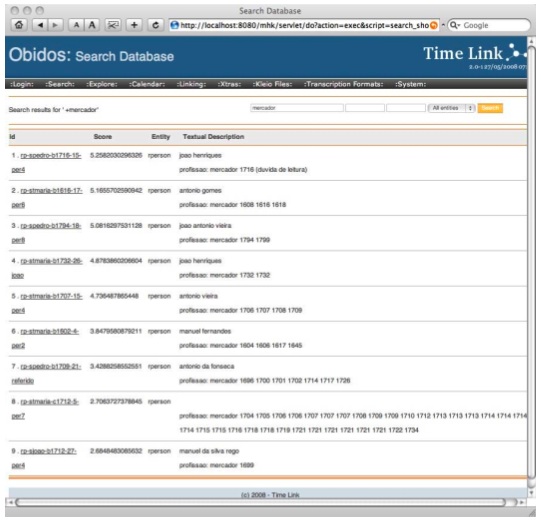
2. Search results

3. Consolidated biography aggregating functions, attributes and relations of an individual as collected in different sources

4. Page showing all the people related to an individual.

5. Link to Google Earth
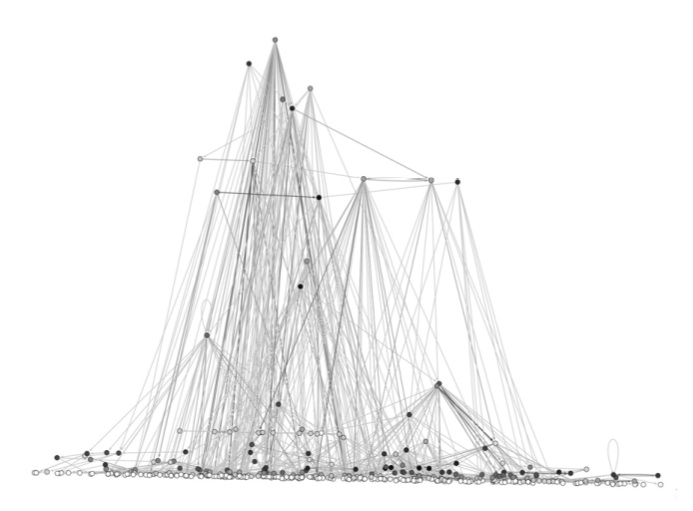
6. Network drawing from Time Link data by Pajek.
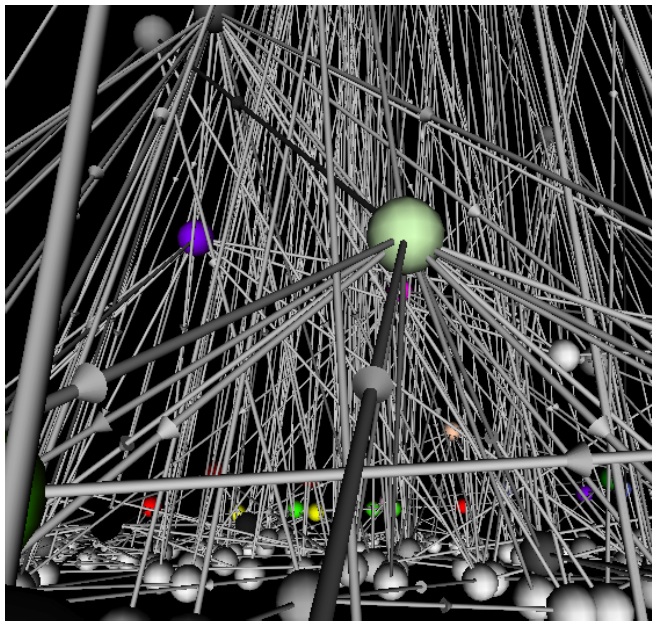
7. Three dimensional network inferred from a Time Link database and visualized using a 3D (WRML) navigator.
PROBLEMS TO SOLVE: CHALENGES
A. From semantics to categorisation
Several conceptual and methodological questions arise:
1st. What’s the level of data description? Shall we register the documental description of the phenomena as it appears on the sources, maintaining a significant degree of subjectivity and unsystematic approach, or shall we categorize the appraisal of the data according to a glossary, a lexicon previously planned? Or shall we always register the contents of the document and, in a second moment, proceed to the categorisation of the data – as we think?
2nd. what data should be categorise? This question pertains to what system are we trying to catch in a model, and what variables are potentially relevant, and how to “capture” these variables, as well explains Emery Noah.
Our discussion led us to define that we should be able to categorise: “entities” (employer/employee/ partner/ associated/ informant/ …); individual behaviours (control/ submission/ collaboration/ help/ cheating/ defection/ conspiracy/ refuse to cooperate/ denial of information/ ....); attitudes (altruism/ loyalty/ inclusion/ exclusion/ racism/ religious chase/….);
collaboration patterns classified on cooperative degrees (cooperative level 1, cooperative level 2;
neutral; non-cooperative level 1; non-cooperative level 2, for example, as proposes Matthew
Ciolek); social status which can interfere with the position of an individual in the network and/or
with their cooperative patterns (nationality; religious status; familial connections; friendship; political status;…) and social values (reputation/ trust/ ….).. This categorisation seems to be fundamental to allow statistical and mathematical treatment of the data.
B. From semantics to problematics
1st. What are the variables of the model? In the case of the variables definition, we think we should not be aprioristic; instead, we must try to identify them simply after an empiric analysis of the results. We only need to define them in order to proceed to mathematical modelling of the outcomes. Essaying their interchangeable position will be, in itself, a theoretical and methodological exercise applied to the data. We recognize the difficulty to overtake the obstacles imposed by the nature of the historical sources and the absence of standard data or rigorous layouts of the information, as the following examples prove:
2nd. an individual may emerge (and will emerge) frequently in this complex system both as partner and as rival;
3rd. the same agent may perform highly cooperative behaviours or act as a cheater or a defector, according to his business interest at the moment and/or the contextual circumstances they got caught in;
4th. the place of an individual in a marginal position in a specific network may be parallel to his central place in another network. His position is not necessarily synonymous, then, of a correspondent social or economic significance or insignificance. We cannot extrapolate the results from a network to a global context. In this project the analysis will be centred on Simón Ruiz network. This is our field of study; however, we intend to cross references to the individuals identified within other data apprehended, for instance, by Hilario Casado Alonso in the assurances in Burgos, or by me and Amândio Barros in the Portuguese notaries records.
Crossing data will be a strategic exercise in order to catch the overall complexity of the system, overtaking its partial view, projected in a promising, but nevertheless compromised documental corpora.
C. From semantics to geotagged visualisation
On a globalised world, the geography of contacts, interactions and exchanges is based, each time more, upon an isotropic world, where distance (or proximity) and accessibility seems no more to compromise the contacts and different relations among human beings; new technologies played an unprecedented role into territorial expression of our networks.
How far, historically, did territory have conditioned those contacts? Under DynCoopNet Project, the study of cooperation and trade networks in the First Global Age aims to bring up some discussions and clarity also on this issue.
Mapping historical data – with an intrinsic spatial component – on commercial networks will clarify the spatial visualization and subsequent comprehension of those contacts networks, their orientations, extensions and intensities. But, when dealing with fuzzy and geographically nonsystematic data, researcher’s interpretations and data classification might misinform geotagging8. Other issues arise when trying to deal with spatial representations of historic data and historic dynamics: the transference of qualitative data to geotagged representations (from semantics to space visualisation of historical phenomena); the discussion of the mutual connections between historical agents and space.
Discussing frontiers between visualizing data and/or visualizing theoretical interpretations of historical dynamics, as well as the risks of data manipulation and its absolute meaning through visual representations are also to be considered, as well as the (in)sufficiency of GIS as a tool to DynCoopNet scientific challenges9.
POSSIBLE CONTRIBUTS…
In what way can we expect, then, that Simón Ruiz archive will be able to answer, not only to the theoretical grid of TECT, but also to the conceptual paradigms proposed in DynCoopNet?
Regarding the concept of trust, we assume, with Ricardo Court, Hilario Casado Alonso, Jack Owens and others10, that trust is a central value to structure Mediterranean and Atlantic trade business networks in the first global age. Analysing the mechanisms of local, regional, national and overseas trade is, then, synonymous of mechanisms of trust analysis.
Reputation was also a major and structuring feature of Ancien Régime societies, as Joaquim Carvalho proves with his research on spiritual kinship in small worlds, through the frequency of choice of godparents, and as my own and Amândio’s research on Atlantic trade networks were also able to prove, mostly in studies centred on self-organising networks, as those we were able to assert, based on a local and micro-analytical perspective in 16th century Portuguese seaports. The systematic and massive relational information we’ll analyse, related to Simón Ruiz network, will certainly allow us to deepen this approach.
Being Simón Ruiz both a central merchant on Iberian and European trade networks, and a member of a new Christian merchant community, with recognised links with Iberian and European networks, his archive presents itself as central-spot to checkout some theoretical approaches also regarding the concept of “group augmentation”. We have to test at what level endogamy predilection strategies recognised within these communities, through familial and marriage strategies, combine or alternate with business group augmentation ones, where “individuals survive or reproduce better in larger groups and where it therefore pays to recruit new members to the group”, quoting Anna Kokko definition (KOKKO: in press).
At the same time, the study of the recruitment criteria on Simón Ruiz network will certainly answer these questions, in the same way the analysis of payment or refusal of exchange letters will somehow illustrate the value of trust and reputation among merchants or, on the contrary, attitudes of defection, cheating or even mechanisms of breakdown of commercial relations, related to the lack of trust.
The mechanisms of networks creation and consolidation will also be analysed from the perspective of interconnection between trade, financial, administrative and political networks, analysis in which the expertise of Hilario Casado Alonso and Nuno Camarinhas will be central.
EXPECTED FINAL OUTPUTS
As final outputs of our work, we hope we’ll be able to produce, co-produce and make available:
1. a database from the documental series identified and studied;
2. contributes for a lexicon and a list of indexing and controlled terms, used to categorise the abovementioned fields (that must be common to the overall DynCoopNet team in order to make work be developed according to general conceptual tools), to add to then one hat the expertise and the efforts of Matthew Ciolek already offered us
3. outputs able to be submitted to statistical analysis; GIS projections and mathematical modelling;
4. two PhD thesis: by Sara Pinto and Ana Sofia Ribeiro, already engaged in a doctoral program centred on this project, and members of the Portuguese team;
5. one Post-Doctoral research work, by Amândio Barros, centred on the connections of Simón Ruiz trade network and Porto’s merchant community related to the Atlantic trade.
6. we hope to contribute to common publications of the CRPs of TECT programme.
We must, however, stress the idea that, as we intend to make a long empirical data gathering in order to discuss hypothesis and built knowledge on very strong documental basis, we won’t be able to give results as quickly as everybody wanted us to …
1 Data from this archive has already been partially analysed by several researchers: H. LAPEYRE., Simón Ruiz et les “asientos” de Philippe II. París, 1953 ; H. LAPEYRE., Une famille de marchands: les Ruiz. París, 1955. (Spanish Ed. Valladolid, 2008) ; F. RUIZ MARTIN., Lettres marchandes échangées entre Medina del Campo et Florence. París, 1965 ; V. VAZQUEZ DE PARGA., Lettres marchandes d’Anvers. 4 vol. París, 1961 ; J. GENTIL DA SILVA., Marchandises et finances. Lettres de Lisbonne, (1563-1578). 2 vols. París, 1959 y 1961; H. KELLENBENZ., Die Függer in Spanien und Portugal bis 1560. 3 vol. München, 1990 (Spanish Ed. Valladolid, 2000); R. RODRÍGUEZ GONZÁLEZ., Mercaderes castellanos del Siglo de oro. Valladolid, 1995; F. ALONSO GARCIA., El correo en el Renacimiento europeo. Estudio postal del Archivo Simón Ruiz.1553-1630. Madrid, 2004.
2 GONZÁLEZ TORGA, José Manuel – “Simón Ruiz, un mercader banquero (siglo XVI), volcado a Europa desde Medina del Campo”. Revista de la Hermandad del Valle de Caidos. Nº 97 (2005). LAPEYRE, H. - Une famille de marchands: les Ruiz. París, Armand Collin, 1955, pp. 144-145.
3 BRAUDEL, Fernand - Civilização Material, Economia e Capitalismo. Vol. 2 – O Jogo das Trocas, p. 68.
4 http://es.wikipedia.org/wiki/Sim%C3%B3n_Ruiz_Embito.
5 Fundación Museo de las Ferias Medina del Campo, 2002 - Pieza del Mes: 2 Letras de cambio giradas en Medina del Campo. In www.museoferias.net
6 Fundación Museo de las Ferias Medina del Campo, 2002 - Pieza del Mes: 2 Letras de cambio giradas en Medina del Campo. In www.museoferias.net
7 LAPEYRE, 1955: 276
8 Cf. Amélia Polónia and Miguel Nogueira’s paper abstract proposal to the workshop Mapping Different Geographies ( Puchberg am Schneeberg, Austria , 11-15 February 2009)
9 Idem.
10 Ricardo Court - Januensis Ergo Mercator: Trust and Enforcement in the Business Correspondence of the Brignole Family [Working paper]




